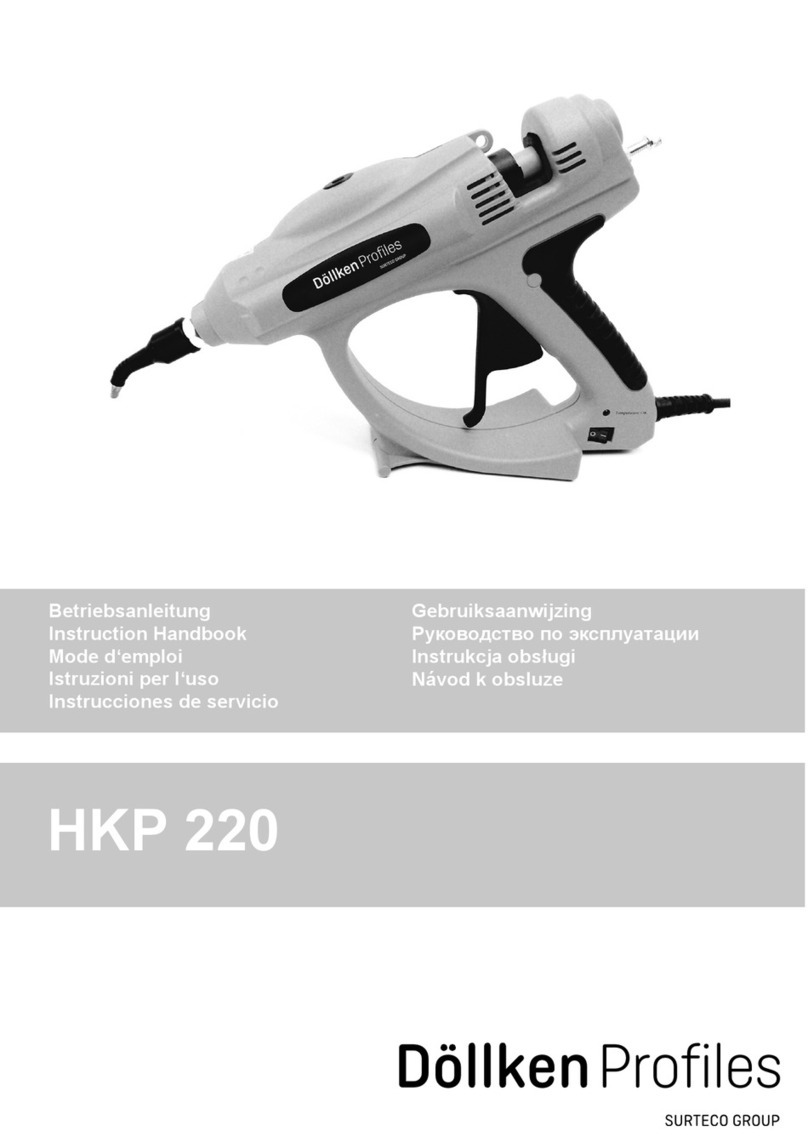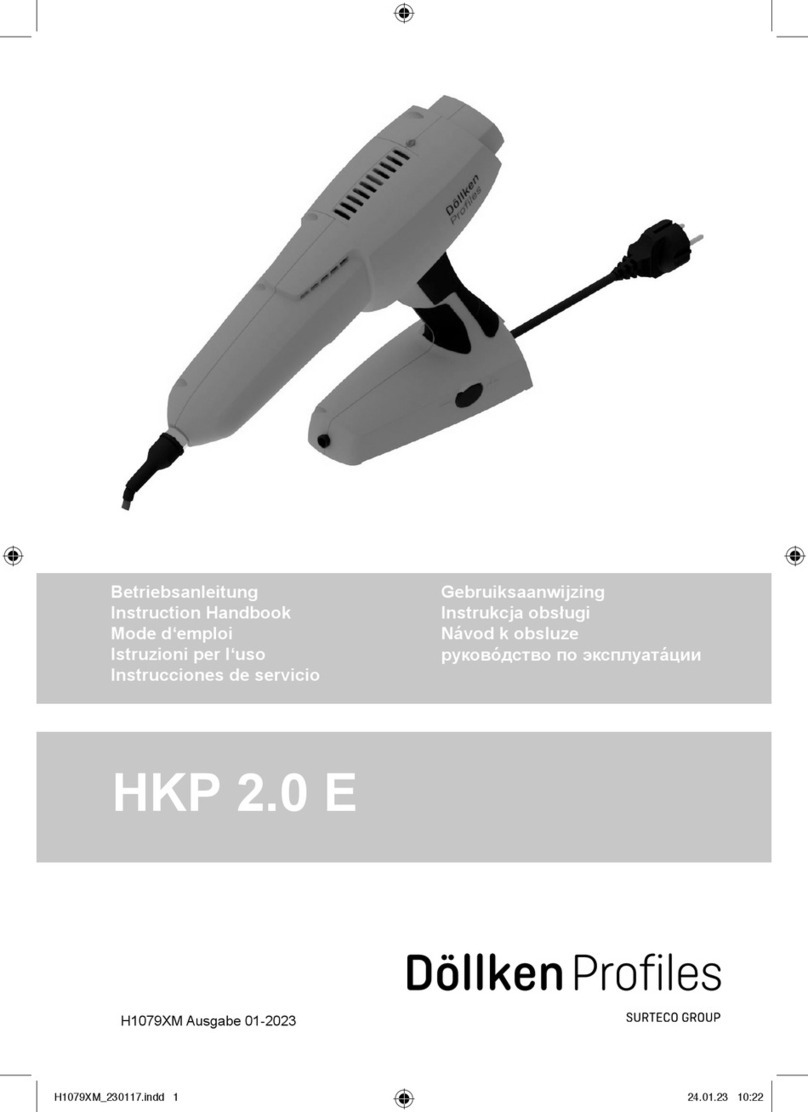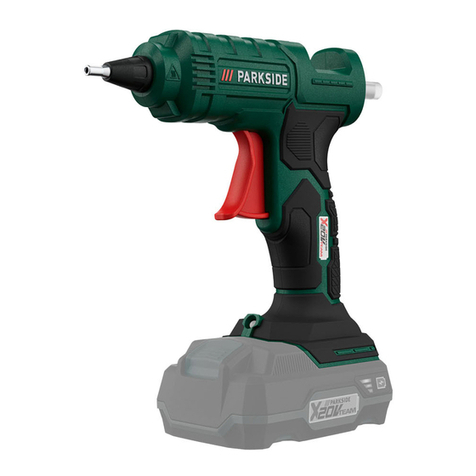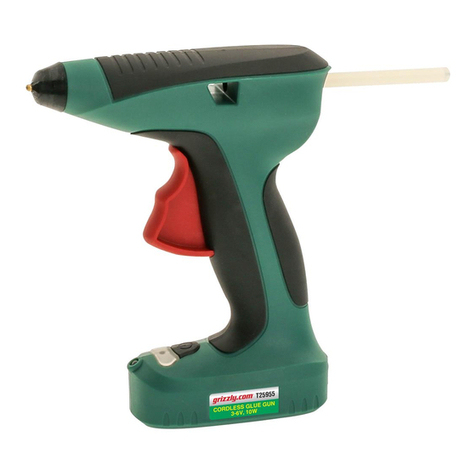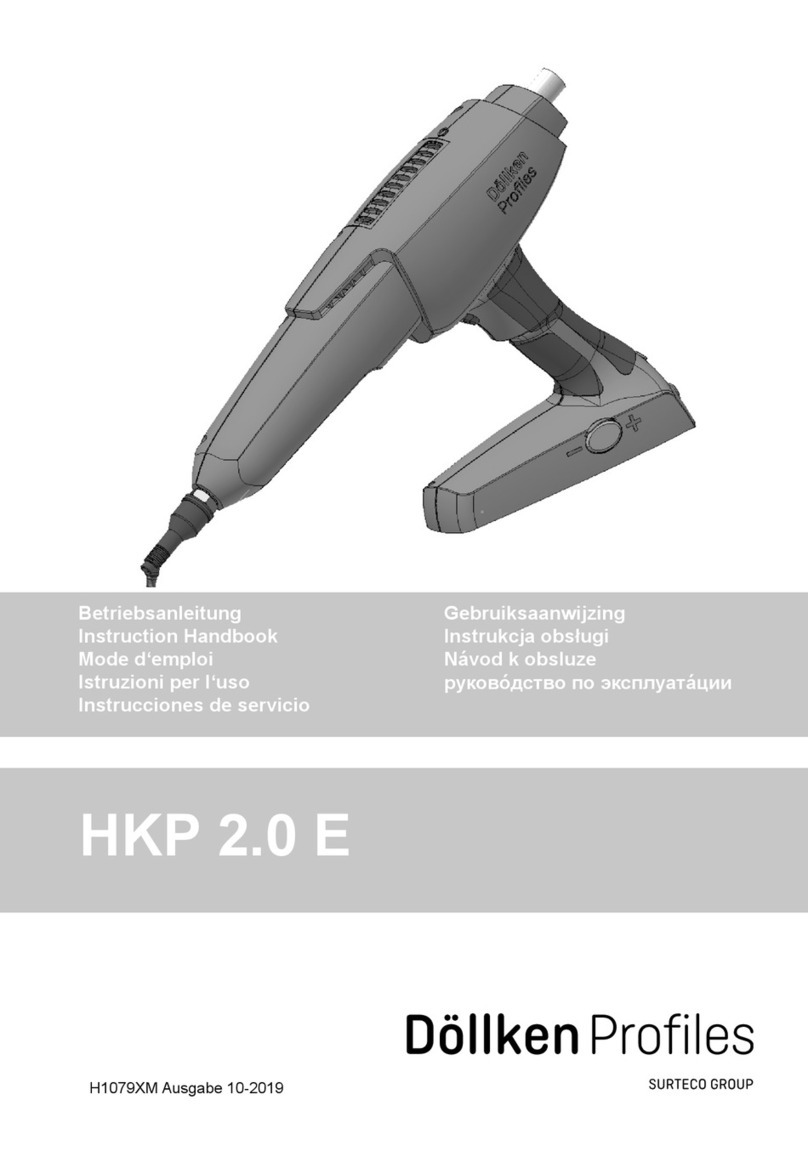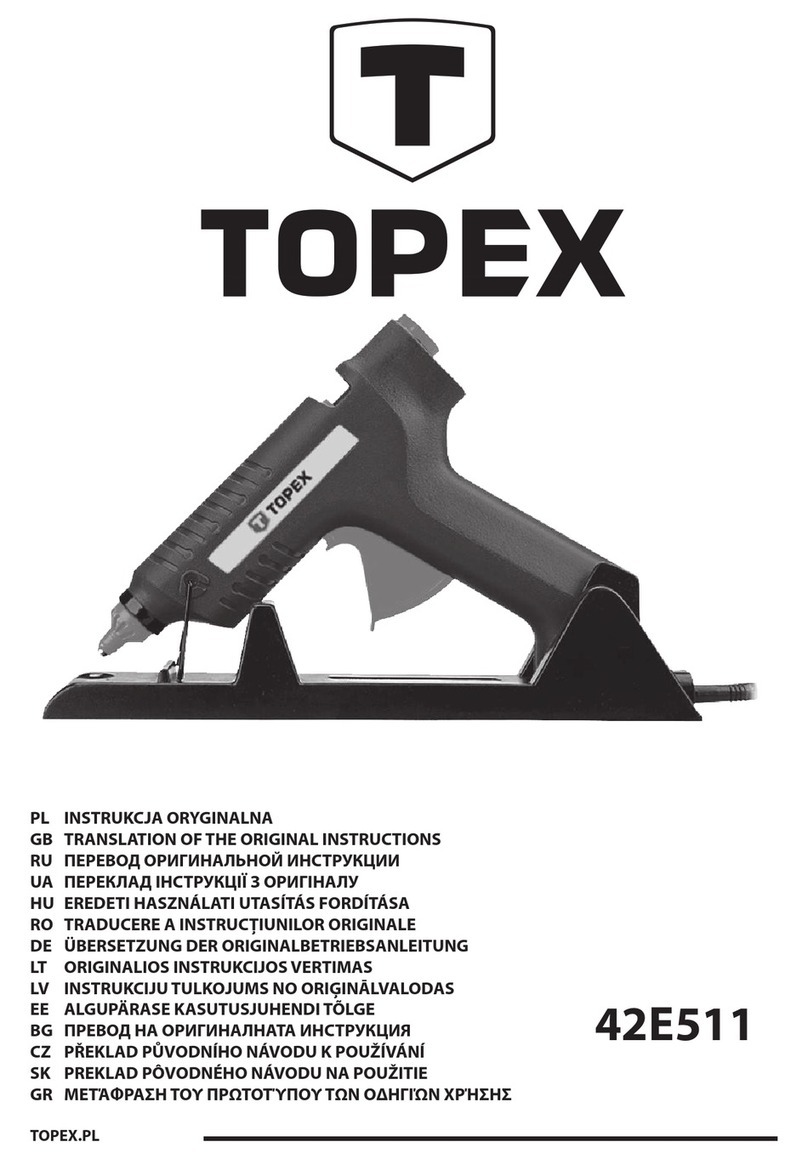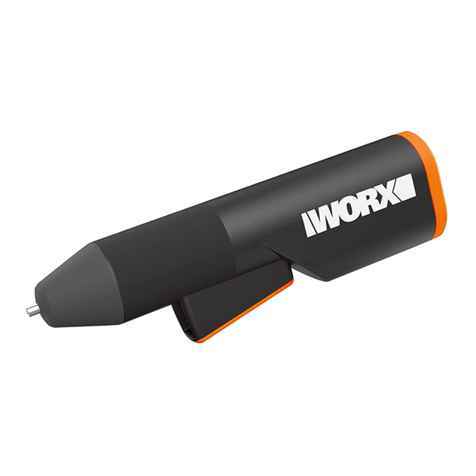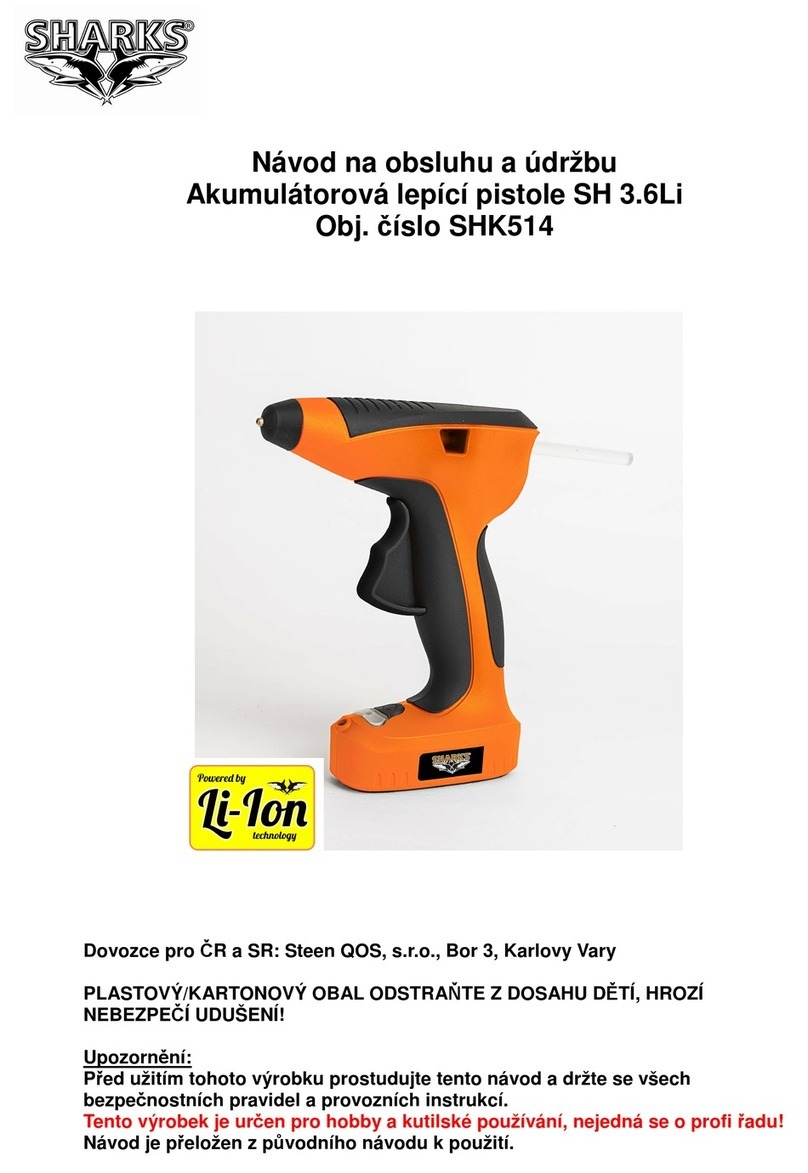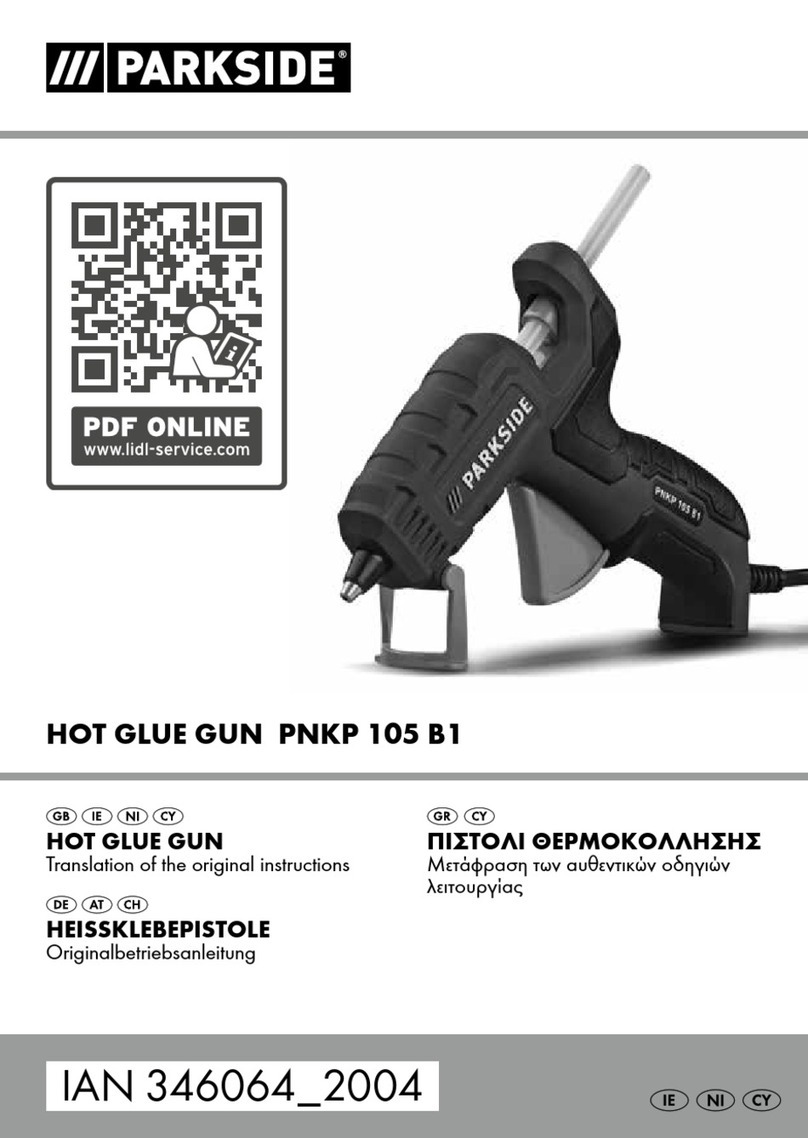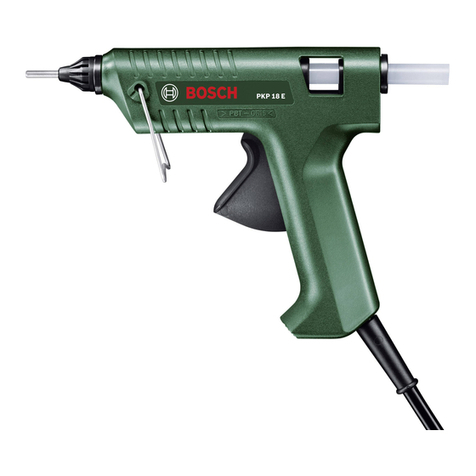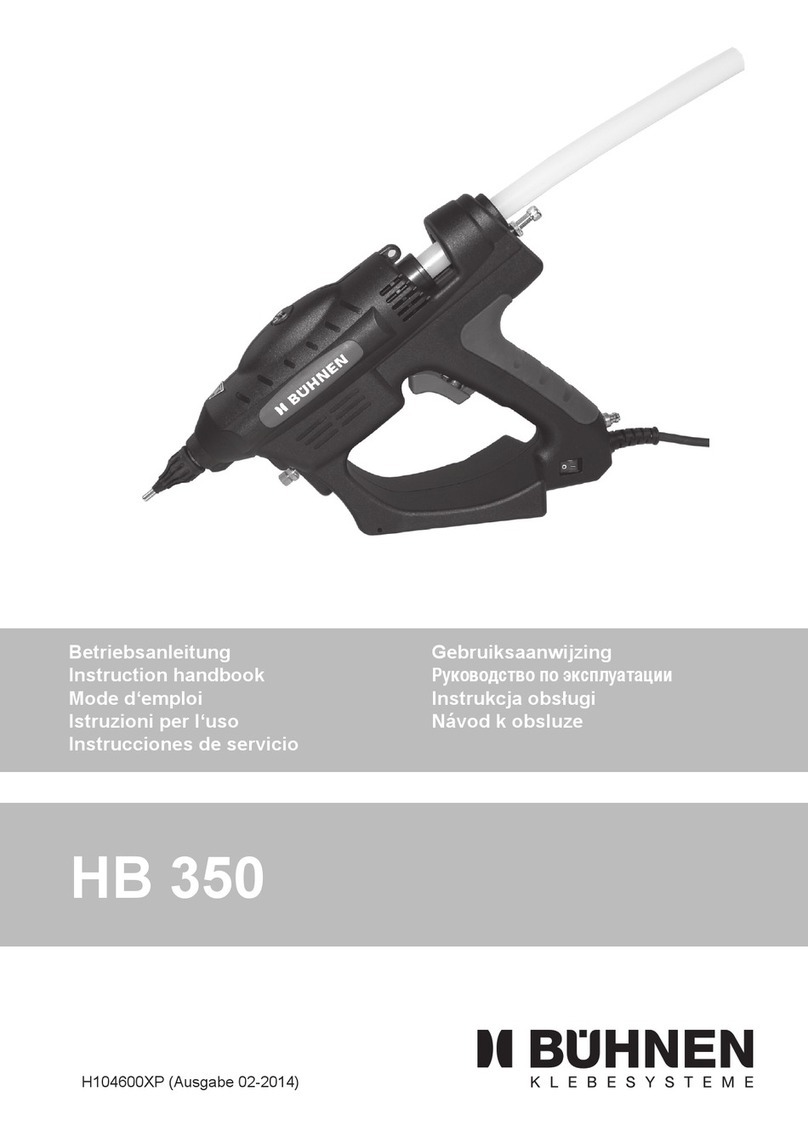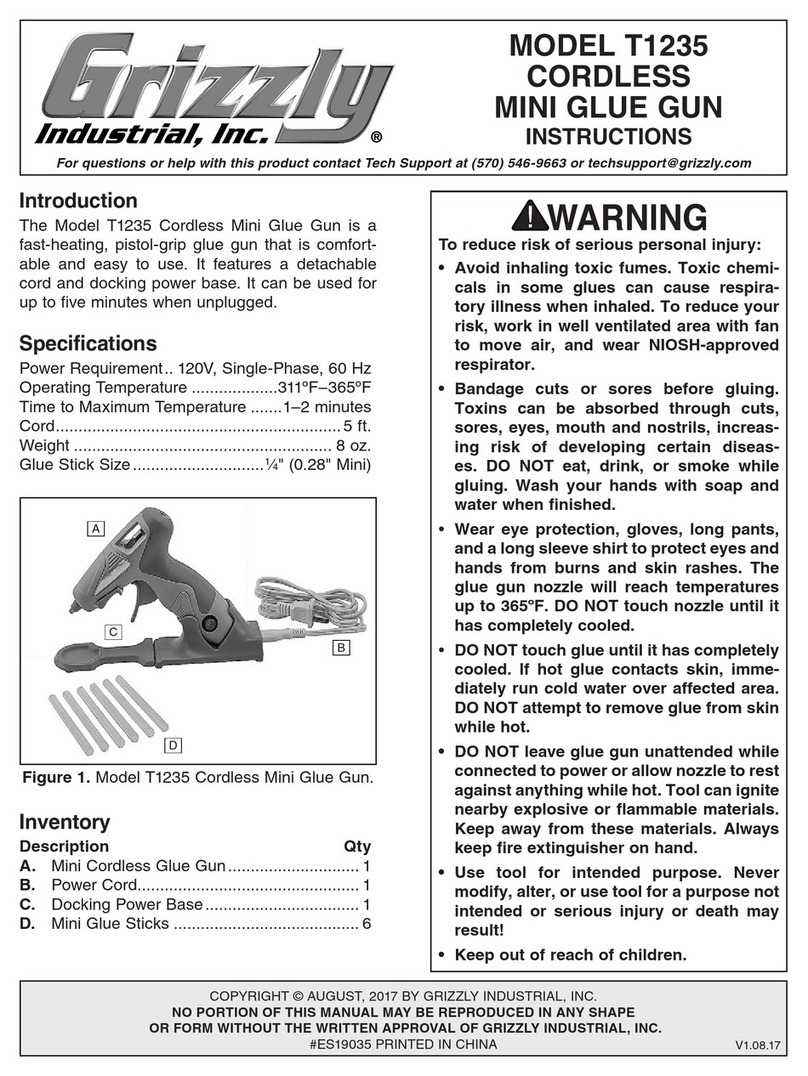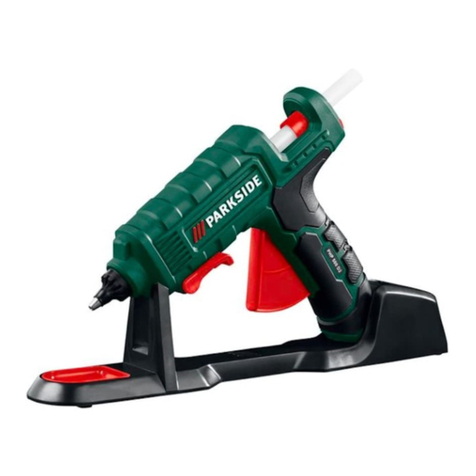45
OPERATION
WARNINGTo reduce the risk of injury,
keep hands away from all moving
parts. Always wear safety goggles or glasses
with side shields.
WARNING Always remove battery
pack before changing or removing
accessories. Only use accessories specifi-
cally recommended for this tool. Others may
be hazardous.
4. Pull the rod handle back to allow the tube to fit
inside the carriage. As the tube is inserted, the
lever will slide back and apply pressure to hold
the tube in place.
Using the Control Switch
The control switch may be set to
two positions: forward and lock.
For forward, push in the control
switch from the right side of the
tool. The tool will run normally.
To lock the trigger, push in the
control switch from the left side of
the tool. The trigger will not work
while the control switch is in the
locked position. Always lock the
triggerorremovethebatterypack
before performing maintenance,
changing accessories, storing
the tool and any time the tool is
not in use.
Anti-Drip and Rod Release
The caulk gun features an automatic anti-drip to
preventdripsafterthe trigger is released. When the
triggerisreleased, the motor will runforashorttime
to release the cluch, but the rod will not move (un-
less pressure in the tube pushes the piston back).
End of travel
When a tube is emptied, the motor will run for a
short time to release the cluch, then shut off. Re-
lease the trigger and change the tube.
Overload
When an overload occurs, the tool will reach the
maximum drive force and continue to hold this
maximum force until the user releases the trigger.
If material is not dispensing, make sure that:
• Nozzle tip is cut
• Inner seal in the caulk tube is broken
• Hardened material is removed from the nozzle
• Caulk tube is not damaged or frozen
• Rod is free of caulk/adhesive materials
Starting and Stopping and Controlling Speed
1. Pull trigger to dispense material.
2. Increase or decrease pressure on the trigger to
dispense the material. Adjust the speed dial to
selectthemaximum speed for proper bead width
and material flow rate ("1" for slowest, "6" for
fastest). The trigger pressure, selected speed,
material type, temperature and nozzle diameter
will all affect the flow rate. When using a tube or
packwitha smaller nozzle diameter useaslower
speed or the material may be forced around the
rear tube seat.
NOTE: Operating the gun at high speeds may
damage the dispensing tube or pack for some
materials. For best results, gradually increase
speed settings.
3. Releasetriggertostopdispensing material.The
rodis free to bemovedmanuallywhen the trigger
is released.
NOTE: The piston will stop automatically when it
has reached the end of the tube.
MAINTENANCE
Cleaning
Clean dust and debris from charger and tool
vents. Keep tool handles clean, dry and free of oil
or grease. Use only mild soap and a damp cloth
to clean the tool, battery pack and charger since
certaincleaningagentsandsolvents are harmful to
plastics and other insulated parts. Some of these
include gasoline, turpentine, lacquer thinner, paint
thinner, chlorinated cleaning solvents, ammonia
and household detergents containing ammonia.
Never use flammable or combustible solvents
around tools.
WARNING To reduce the risk of per-
sonal injury and damage, never im-
merse your tool, battery pack or charger in
liquid or allow a liquid to flow inside them.
WARNING To reduce the risk of injury,
always unplug the charger and remove
the batterypack from thecharger or toolbefore
performingany maintenance. Neverdisassem-
ble the tool, battery pack or charger. Contact a
MILWAUKEE service facility for ALL repairs.
Maintaining Tool
Keep your tool, battery pack and charger in good
repairbyadoptingaregularmaintenance program.
After six months to one year, depending on use,
return the tool, battery pack and charger to A
MILWAUKEE service facility for:
• Lubrication
• Mechanical inspection and cleaning (gears,
spindles, bearings, housing, etc.)
• Electrical inspection (battery pack, charger,
motor)
• Testing toassureproper mechanical and electrical
operation
If the tool does not start or operate at full power
withafully charged battery pack, cleanthecontacts
on the battery pack. If the tool still does not work
properly, return the tool, charger and battery pack,
to a MILWAUKEE service facility for repairs.
FORWARD
LOCK
1
2
ASSEMBLY
WARNING Recharge only with the
charger specified for the battery. For spe-
cific charginginstructions, read the operator’s
manualsupplied with yourcharger andbattery.
WARNING Always remove battery
pack before changing or removing
accessories. Only use accessories specifi-
cally recommended for this tool. Others may
be hazardous.
Removing Battery Pack from Tool
Push in the release buttons and pull the battery
pack away from the tool.
Inserting Battery Pack into Tool
To insert the battery pack onto the tool, slide the
packontothe body of the tool. Make sure it latches
securely into place.
Inserting the Rod
The piston and rod must match the carriage be-
ing used to avoid possible damage to the tool or
material.
1. Remove the battery pack.
2. Grasp the rod handle. The teeth on the rod
should point down.
3. Insert the rod from the rear of the tool. It may be
necessaryto wiggle the rodslightlywhile pushing
it through the tool. Do not run the tool to pull the
rod through the tool, this will damage the tool
and rod.
4. Attach the piston.
NOTE: Keep the piston and rod clean. Retracting
or inserting a piston that is covered with material
may damage the internal parts of the tool.
Installing the Carriage or Barrel
Placethecarriageover the piston and rod. Hold the
carriagecollarsecurelywhile screwing the carriage
into the collar.
WARNINGTo reduce the risk of injury,
keep hands out of the piston area
of the tool. Fingers can be pinched between
carriage and the piston.
Installing Caulk or Adhesive Tube
Always check tubes for punctures or damage
before installing. Do not use a damaged or frozen
tube.
1. Remove battery pack.
2. Cut nozzle of tube at an angle and size per
manufacturer's recommendation to suit the job
(unless the nozzle is pre-cut). A smaller nozzle
diameter requires more force to push the caulk
and reduces battery life.
3. Break the inner seal of the tube. If the inner seal
is not broken, the caulk material may be forced
out the rear end of the tube and damage the
tool.
NOTE: Before using a partially filled tube, re-
move any hardened material with a long nail or
piece of wire.
5. Insert tube into the carriage.
6. Push the rod handle forward until the piston is
against the tube.
7. To remove the tube, pull the rod handle back.
Push the tube back toward the tool, then lift the
tube out of the carriage.
Installing Sausage Type Pack
Always check sausage packs for punctures or
damage before installing. Do not use a damaged
or frozen pack.
1. Remove battery pack.
2. Pull the rod handle back to allow the pack to fit
inside the barrel
3. Insert pack into barrel.
4. Cut off end of sausage pack per manufacturer's
recommendation.
NOTE: Before using a partially filled pack, re-
move any hardened material.
5. Insert nozzle supplied with the sausage pack
into the nozzle cap and screw onto the barrel
6. Cut nozzle at an angle and size per manufac-
turer's recommendation to suit the job (unless
thenozzleis pre-cut).Asmallernozzle diameter
requires more force to push the caulk and re-
duces battery life.
7. Push the rod handle forward until the piston is
against the pack.
Rely only on high-grade power tools on our virtual shelves.


